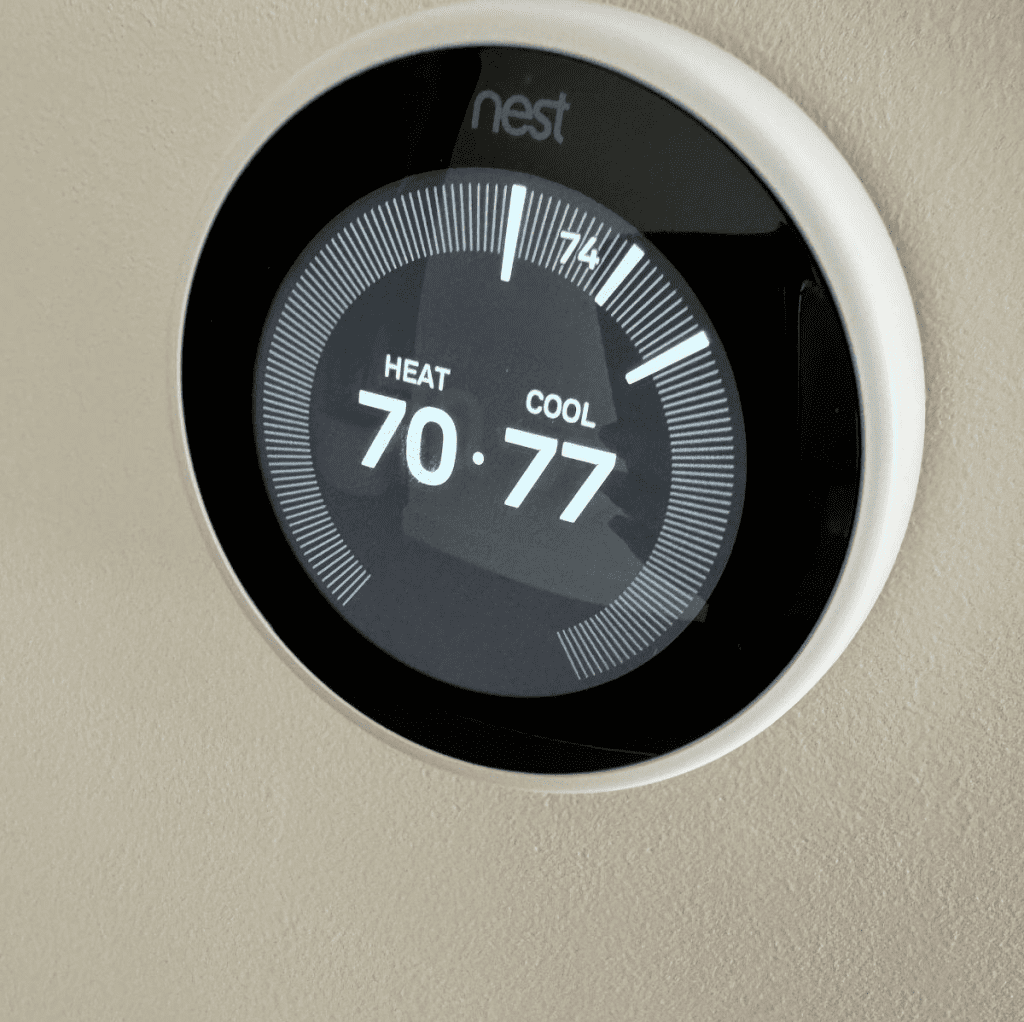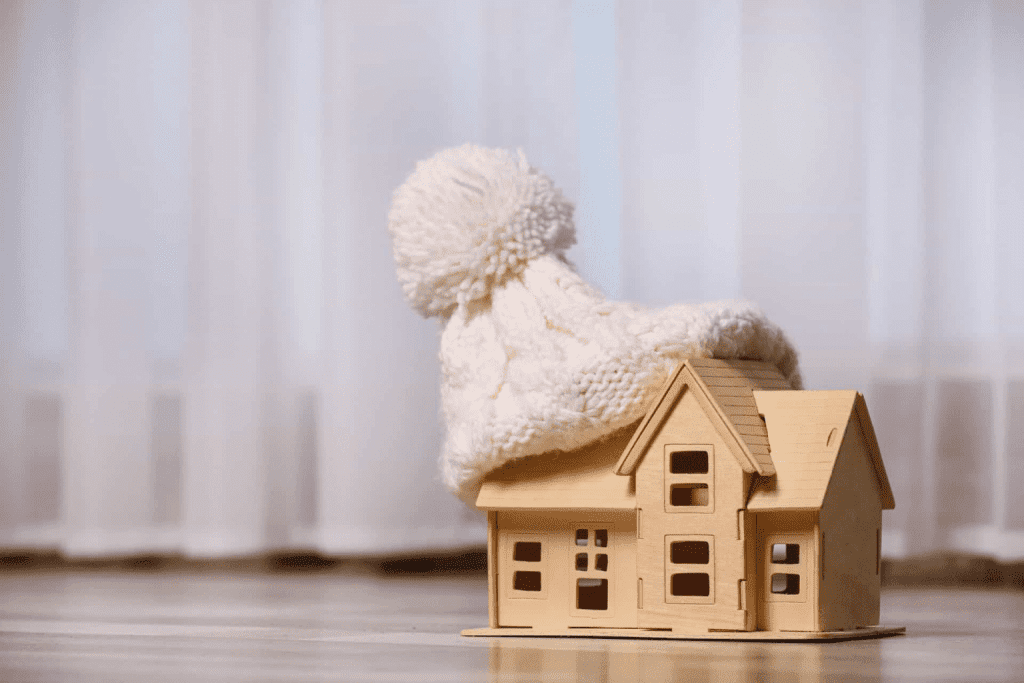As winter approaches, many homeowners are faced with a common question: “What’s the ideal temperature to set my thermostat during the colder months?” Balancing comfort and energy efficiency can be tricky, but finding the right thermostat setting can keep you warm without skyrocketing your energy bills. In this article, we’ll break down expert recommendations, tips for maximizing efficiency, and practical strategies for staying comfortable all winter long.

Comfort vs. Energy Efficiency: Finding the Sweet Spot
When it comes to winter thermostat settings, it’s a delicate dance between staying comfortable and conserving energy. The ideal temperature will vary based on individual preferences and home insulation, but the overarching goal remains the same: keeping warm while maintaining affordable heating costs.
According to the U.S. Department of Energy, a good starting point is to set your thermostat to 68°F (20°C) when you’re home and awake. This temperature strikes a balance between warmth and energy efficiency, ensuring that your heating system isn’t working harder than necessary while still keeping you comfortable. Adjusting it based on your personal tolerance for cold can help you save even more.
Recommended Thermostat Settings for Winter
While each home and family is different, the following guidelines can help you optimize your thermostat settings during the winter:
1. When You’re Home
The 68°F (20°C) recommendation is ideal for when you’re active and awake at home. This temperature keeps most people comfortable while preventing the heating system from running excessively. If you have sensitive family members or just prefer a warmer environment, you can increase the setting slightly, but keep in mind that each degree higher can increase your heating bill by around 1%.
2. When You’re Asleep or Away
For maximum energy savings, consider turning down the heat when you’re asleep or away from home. Experts suggest lowering the thermostat by 10-15 degrees during these periods. A temperature of 55-60°F (13-15°C) is often recommended, as this can save up to 10% on your heating bills over the course of the season. Using blankets at night or dressing warmly can help you feel comfortable without the need for excessive heat.
3. Using Programmable Thermostats for Better Control
One of the best tools you can invest in for better temperature management is a programmable thermostat. These devices allow you to schedule automatic temperature adjustments throughout the day. For instance, you can set the thermostat to lower while you’re at work or sleeping and have it warm up your home shortly before you return or wake up.
This not only saves energy but also ensures your home is comfortable when it matters most. If you’re upgrading, consider a smart thermostat that can learn your routines and make adjustments based on your patterns, optimizing both comfort and efficiency.
Zoning: Tailor Temperatures by Room
For larger homes or those with uneven heating distribution, a zoning system can be a game-changer. Zoning divides your home into separate heating zones, each with its own thermostat. This allows you to heat only the rooms you use regularly, like the living room and kitchen, while keeping lesser-used areas, such as guest bedrooms or basements, at a cooler temperature.
By creating different heating zones, you can significantly reduce energy waste while ensuring your living spaces remain cozy and warm. This is particularly helpful if you have family members with different temperature preferences.
Humidity Control: Why It Matters

Many people overlook the importance of humidity levels when setting their thermostats. Dry winter air can make your home feel much colder than it actually is, prompting you to turn up the heat unnecessarily. Ideally, you should aim for an indoor humidity level of 30-50% during the winter months.
Consider using a humidifier to add moisture to the air, which can make lower temperatures feel warmer. The added humidity can help maintain a comfortable environment, allowing you to lower the thermostat without sacrificing comfort. This not only helps with energy savings but also reduces common winter issues like dry skin and respiratory discomfort.
Dress for the Season: A Simple Way to Stay Warm
Before reaching for the thermostat, try reaching for a sweater instead. Layering up with warm clothing, such as sweaters, socks, and even cozy slippers, can make a big difference in how comfortable you feel indoors. By dressing appropriately for the colder weather, you may find that you don’t need to raise the temperature as much as you think.
Even small changes, like wearing thermal pajamas or using extra blankets, can make cooler nighttime settings feel perfectly comfortable. In addition to dressing warmly, simple adjustments like adding thicker curtains to windows or using draft stoppers can help maintain warmth without overworking your heating system.
Additional Tips for Maximizing Energy Efficiency

Aside from adjusting your thermostat settings, there are other ways to keep your home warm and energy-efficient throughout the winter:
- Seal Drafts: Ensure your home is well-insulated by sealing any drafts around windows, doors, or vents. Drafty areas allow warm air to escape and cold air to enter, forcing your heating system to work harder.
- Regular HVAC Maintenance: Schedule regular check-ups for your heating system to ensure it’s working efficiently. A well-maintained system uses less energy and provides more consistent warmth.
- Ceiling Fans: Use ceiling fans on a low, reverse setting to circulate warm air that tends to rise to the ceiling back down to the living space.
Conclusion: Creating the Perfect Winter Comfort Zone
In the quest for the ideal winter thermostat setting, the right balance depends on your comfort preferences, energy-saving goals, and home’s unique heating needs. By following expert recommendations—keeping the thermostat around 68°F when at home, lowering it when you’re away or asleep, and investing in a programmable or smart thermostat—you can maintain a warm and cozy environment while keeping energy costs under control.

Don’t forget to factor in the importance of humidity control and seasonal dressing to make the most of lower thermostat settings. By taking a comprehensive approach to managing your home’s winter temperature, you can enjoy comfort and efficiency throughout the cold months without any added stress to your energy bills.


